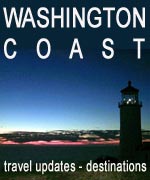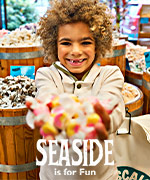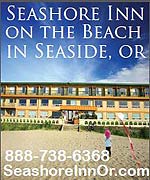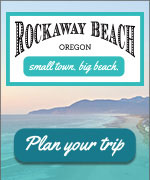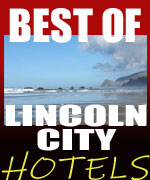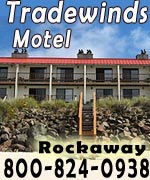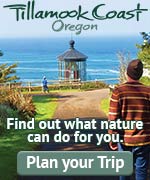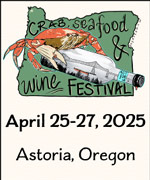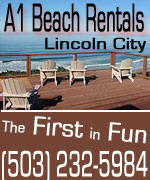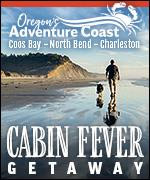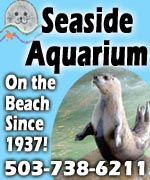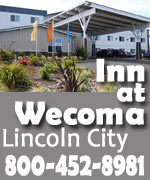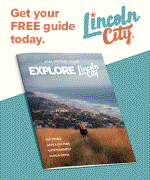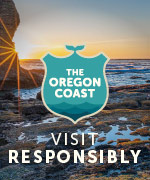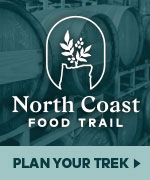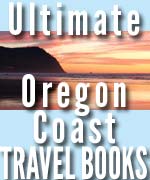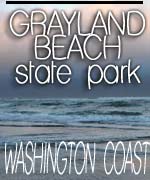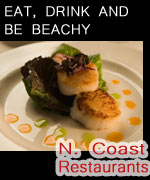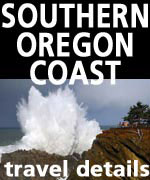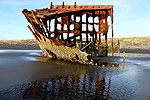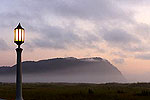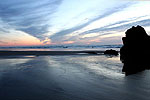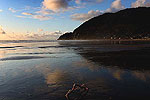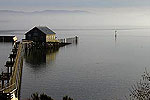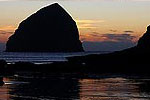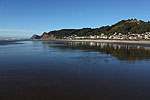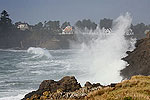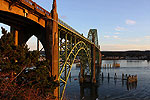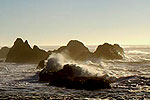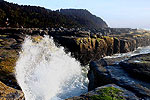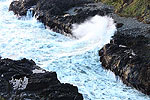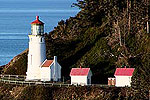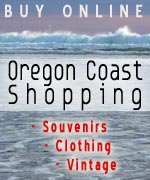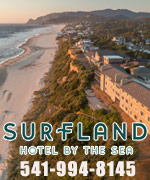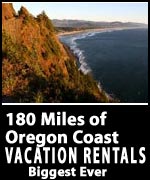1964 Tsunami Part 1: Its Impact on S. Oregon Coast
Published 03/22/22 at 10:45 PM PST
By Oregon Coast Beach Connection staff
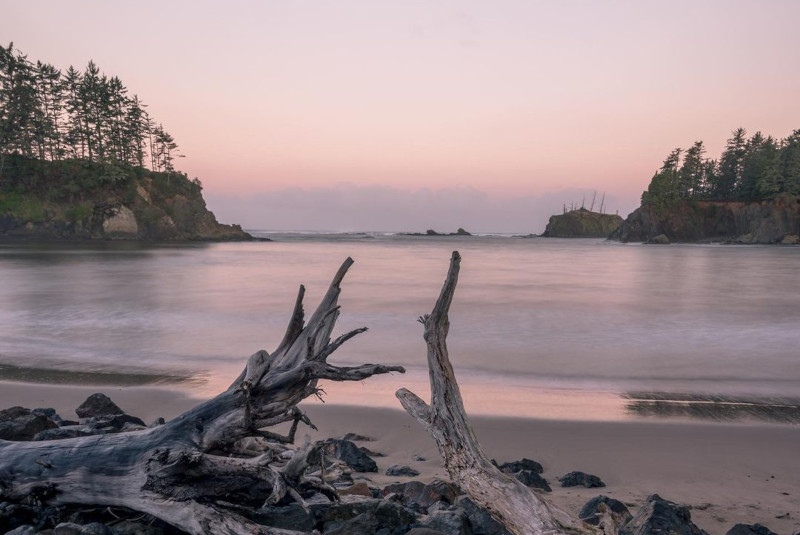
Includes exclusive listings; some specials in winter
In Cannon Beach:
Includes rentals not listed anywhere else
In Manzanita, Wheeler, Rockaway Beach:
Some specials for winter
In Pacific City, Oceanside:
Some specials for winter
In Lincoln City:
Some specials for winter
In Depoe Bay, Gleneden Beach:
Some specials for winter
In Newport:
Look for some specials
In Waldport
Some specials for winter
In Yachats, Florence
Some specials for winter
Southern Oregon Coast Hotels / Lodgings
Reedsport to Brookings, places to stay; winter deals
(Coos Bay, Oregon) - On March 27 – this Sunday – it will be 58 years since the deadly tsunami hit the Oregon and Washington coast. The 60th year anniversary is approaching. (Above: Sunset Bay near Coos Bay got some of the worst of it in '64 - courtesy Manuela Durson - see Manuela Durson Fine Arts for more)
With this mind, this week Oregon Coast Beach Connection begins a special three-part retrospective on the tsunami in 1964, beginning with the south coast. Parts 2 and 3 this week will be on the central coast and north coast. 1964 Tsunami Part 2: Tragedy, Destruction Hits Central Oregon Coast and 1964 Tsunami Part 3: Tearing Up Bridges, Homes on the N. Oregon Coast
At 5:36 p.m. on that Friday, the largest earthquake ever recorded in North America struck near Anchorage, Alaska. It and the subsequent tsunami killed 106 in Alaska, 13 in California and four in Oregon, causing over $2 billion in damage (by today's money standards).
In Oregon, the highest confirmed wave was at 12 feet, but in British Columbia one was 32 feet high and in Alaska it reached over 67 feet. Crescent City, California got the worst of it on the lower 48, with Seaside and Cannon Beach getting hit hard as well. Four children were killed in Newport.
The southern Oregon coast wound up rather lucky, however. Back then, they did not use the word "tsunami:" all newspaper reports talked about a "tidal wave."
In the Coos Bay area, the first surge came around midnight – the highest of them. A series of others followed with each progressively smaller.
At Charleston, some of the most damage was done. According to Coos Bay's The World March 28 edition on the next day, the Charleston Small Boat Basin had several boats damaged or sunk. Among them the sport fishing vessel Northwest was sunk in the South Slough not far from Sportsman's Dock. Just barely visible above the water was the Irene L., considered a total wreck.
The 25-foot-long Rose Lee M. was washed up on the rocks, but luckily had little damage. Several others wound up getting washed up on the beach in the area but had no major damage. A tug in the middle of Coos Bay was still sinking as the reporter wrote the piece.
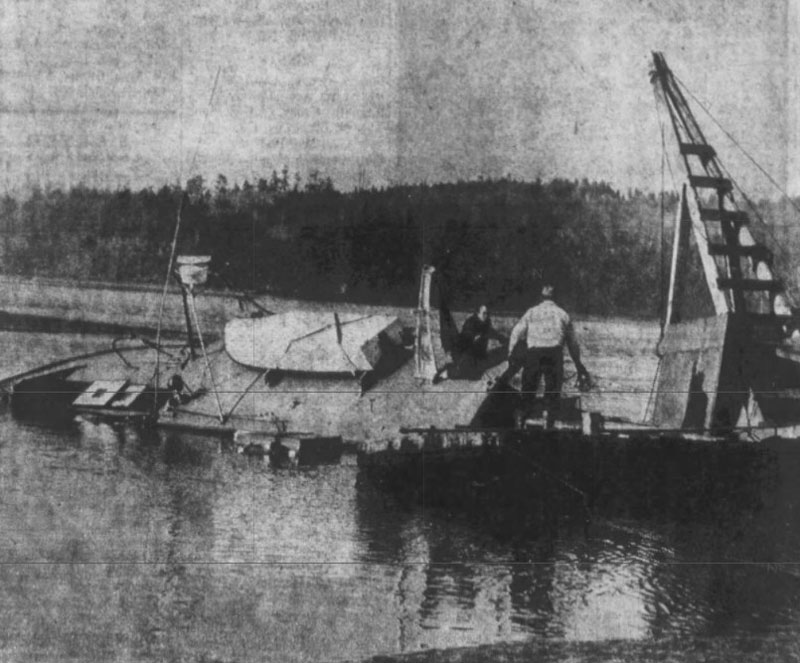
The Northwest wrecked in Charleston (courtesy The World, March 28, 1964 edition)
Two sections of docks were torn loose, and a restroom still had high water and logs crammed inside it the next day.
The World reported many residents heard the tsunami, saying it sounded like a “giant suction and then a roar.”
Some 30 people were evacuated from the slough area. One Eugene man went missing from Sunset Bay during the whole event, but he was later found and was OK.
Meanwhile, down at the Empire docks at Coos Bay, not much damage was incurred. North Bend reported no issues.
One local woman immediately flew to Anchorage to help her niece out.
At Sunset Beach, facilities there had received extensive damage. Debris covered the area, and some of it was torn up bits from picnic tables, benches and other park objects.
The Empire district's sanitary line had to be repaired. Eight sections of the sewage outfall were knocked away by the tsunami. Some residents reported raw sewage washing up on their property.
Reedsport and Gardiner did not suffer much in the way of damage, either, with about an eight-foot surge being hampered by the town's breakwaters. However, the Umpqua River Lifeboat Coast Guard Station reported losing two boats to high waves, but they were later recovered. The floating bait stand at Salmon Harbor was torn loose, and the Ludwig family tried to evacuate their trailer near the shore but their car was swamped by waves. They were not injured, however.
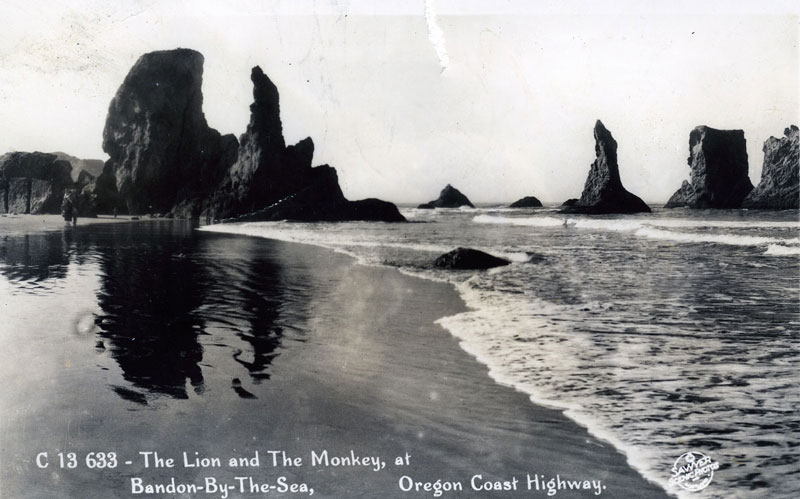
Historical shot of Bandon courtesy Bandon Historical Society Museum
In Florence, a series of enormous waves were sent shimmying up the Siuslaw River, one estimated at 16 feet high at the time. The area received extensive damage to riverfront property, and even a large number of power lines and telephone lines were knocked down. Various boats were torn from their moorings, but there does not seem to be any reports of sinking in the south central Oregon coast town.
Bandon saw no damage, at least that was reported at the time. Enormous amounts of sawmill logs in the Coquille River were washed out and then shoved onto the beaches of Bandon, with one report saying “As far as you can see to the north and south of the Bandon jetties there are logs scattered on the beaches.”
Farther down the south Oregon coast, Gold Beach had a number of floating docks and boats torn loose. At nearby Wedderburn, some boats were also set adrift. Three homes in the area were flooded.
Down near Brookings, five families struggled to get out of their homes but made it just in time. Brookings itself received no damage at all.
A guest editorial a few days later in The World, written by Eugene's Bob Rover, wondered aloud why there was no warning. His position was that given tourists were there spending money, they should be guaranteed some degree of safety, saying the “devices of science” should have been able to make rapid communication of the danger more accessible.
He talked about seeing the wave come in from a high vantage point, watching as it swamped over everything and bringing with it gobs of debris. He and a group of people saw a wave building up offshore and were able to run to a higher spot.
Rover talked to a Navy official, who admitted the only real warning system available to them at the time was the television. He notes this one wasn't that big, but the next one could be.
Prophetic words.
Oregon Coast Hotels in this area - South Coast Hotels - Where to eat - Maps - Virtual Tours
Cannon Beach Lodging
Nehalem Bay Lodgings
Manzanita Hotels, Lodging
Three Capes Lodging
Pacific City Hotels, Lodging
Lincoln City Lodging
Depoe Bay Lodging
Newport Lodging
Waldport Lodging
Yachats Lodging
Oregon Coast Vacation Rentals
Oregon Coast Lodging Specials
More About Oregon Coast hotels, lodging.....
More About Oregon Coast Restaurants, Dining.....
LATEST Related Oregon Coast Articles
A new set of stumps is documented at Coos Bay and they're fascinating. Geology, sciences
5.8 Quake Rattles Off South Oregon Coast Near Port Orford - No Tsunami Threat
At 9:08 p.m. and was about 8 miles beneath the surface
March is Anniversary for Two Major Tsunamis on Oregon Coast, One Deadly
March 27 in 1964 and March 11 in 2011
UPDATE: 3 Quakes Off S. Oregon Coast Since Midnight, No Tsunami Alert
Was enough for a 'green pager' alert, but no damage: west of Coos Bay, Bandon. Weather
Oregon Coast Tsunami Findings: Port Orford Received Largest Wave at 2.4 ft
See where the other towns came in. Weather
Two Quakes Off South Oregon Coast - No Tsunami Alert
Two earthquakes shook off the southern coast in the last day, with the first one large enough to cause Oregon officials to announce there would be no threat of a tsunami
March Marks Two Dramatic But Grim Tsunamis in Oregon Coast History
March 11 of 2011 and March 27 of 1964. Sciences, geology. Bandon, Port Orford
Looking Back: 10-Yr Anniversary of Tsunami Scare on Oregon Coast
Despite the fear, the evacuations were orderly. South coast, sciences, geology
Back to Oregon Coast
Contact Advertise on BeachConnection.net
All Content, unless otherwise attributed, copyright BeachConnection.net Unauthorized use or publication is not permitted





